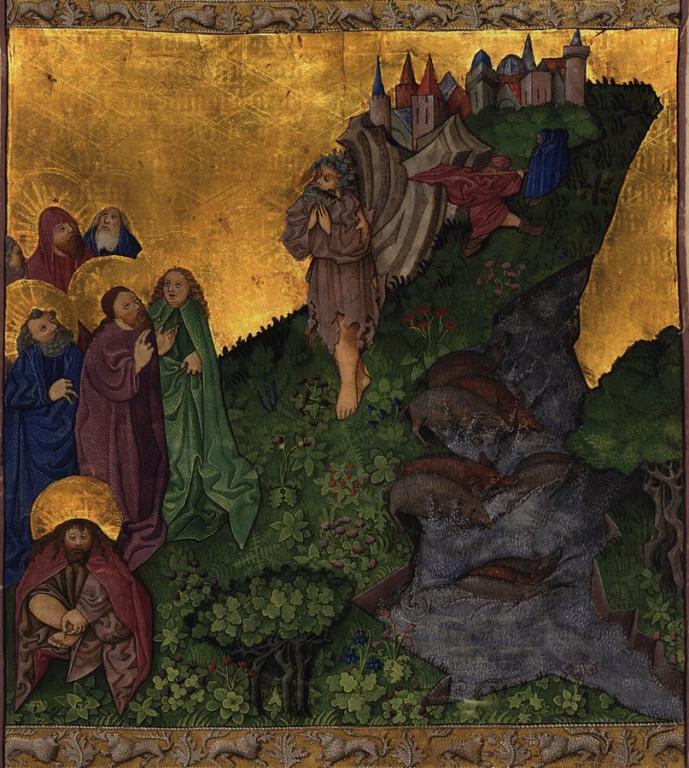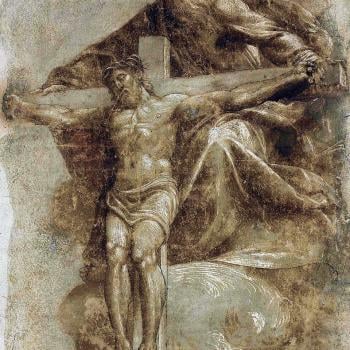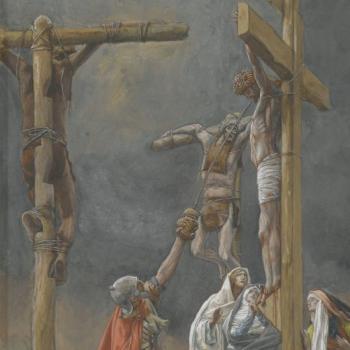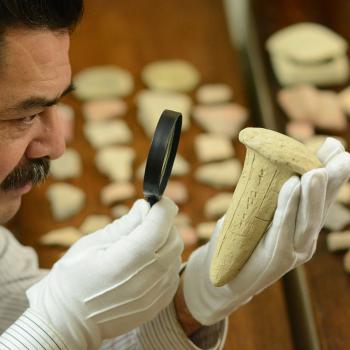
Ordinary Time constitutes two seasons in the church calendar. The first season or phase of Ordinary Time follows Christmas Time. The second season or period of Ordinary Time follows Easter Time. According to one site, Ordinary Time lead us “through the life of Christ. This is the time of conversion. This is living the life of Christ.” The site goes on to state, “Ordinary Time is a time for growth and maturation, a time in which the mystery of Christ is called to penetrate ever more deeply into history until all things are finally caught up in Christ. The goal, toward which all of history is directed, is represented by the final Sunday in Ordinary Time, the Solemnity of Our Lord Jesus Christ, King of the Universe.”
We see evidence of Jesus’ mystery penetrating history and the world in his incarnate life, as he performs miracles of various kinds. For example, we find evidence of Jesus’ penetration of history and the world in various ways and in quick succession in the following series of events recorded in Mark’s Gospel. The winds and waves obey Jesus, as with the stilling of the storm (Mark 4:35-41). The demons also obey him, as when he casts out a legion of them from a wild and dangerous man and sends them into a herd of pigs (Mark 5:1-13). A little while later, according to Mark’s Gospel, we find human bodies obeying him, as Jesus heals a woman of an issue of blood and raises a girl from the dead (Mark 5:21-43). But perhaps the greatest evidence of his presence is his long-suffering patience involving people’s hard-heartedness, slowness to understand, and the transformation of the human heart, which takes place in Jesus’ ministry through God’s Spirit.
I find extraordinary those occasions when people do not believe in Jesus, though they know that he has performed mighty miraculous deeds. Take, for example, the brief transitional section in Mark 5:14-20 that stands between the event where Jesus casts out the demons into the herd of pigs that rush headlong to destruction over a cliff and into the sea and the events where Jesus heals the woman with the issue of blood and raises a girl from the dead. There in between these events, we find the townspeople who are told by the herdsmen of the pigs what has happened. The townspeople rush out to find Jesus along with the formerly demon-possessed and crazed man sitting, clothed, and in his right mind. The text tells us that when they see the man sitting there, calm and collected, they are afraid. After being told in full what had occurred, they beg Jesus to depart, which he does. Certainly, one can understand their consternation if they are upset about the loss of the pig herd. But if Jesus could free a man from a legion of demons that their chains could not subdue, surely, he could restore to them their herd of pigs, or more.
This is not the only extraordinary evidence of unbelief. After healing the woman with the issue of blood and raising the dead girl to life again, we find Jesus returning home to unbelieving Nazareth. Let’s pick it up there in Mark 6:
He went away from there and came to his hometown, and his disciples followed him. And on the Sabbath he began to teach in the synagogue, and many who heard him were astonished, saying, “Where did this man get these things? What is the wisdom given to him? How are such mighty works done by his hands? Is not this the carpenter, the son of Mary and brother of James and Joses and Judas and Simon? And are not his sisters here with us?” And they took offense at him. And Jesus said to them, “A prophet is not without honor, except in his hometown and among his relatives and in his own household.” And he could do no mighty work there, except that he laid his hands on a few sick people and healed them. And he marveled because of their unbelief.
And he went about among the villages teaching (Mark 6:1-6; ESV).
The only thing that matches the astonishing unbelief of the hometown crowd is Jesus’ astonishment at their unbelief. Similarly, we find Jesus’ own disciples later in this chapter going from observing Jesus feeding the five thousand to fearing for their lives in a boat sailing on a turbulent sea. Jesus approaches them, as he walks on the water, though they presume he is a ghost. After he assures them it is he, and tells them not to fear, he enters the boat. As in the case of the stilling of the storm in Mark 4, they are amazed, though so slow to understand. The text reads:
And he saw that they were making headway painfully, for the wind was against them. And about the fourth watch of the night he came to them, walking on the sea. He meant to pass by them, but when they saw him walking on the sea they thought it was a ghost, and cried out, for they all saw him and were terrified. But immediately he spoke to them and said, “Take heart; it is I. Do not be afraid.” And he got into the boat with them, and the wind ceased. And they were utterly astounded, for they did not understand about the loaves, but their hearts were hardened (Mark 6:48-52; ESV).
Jesus’ patience with his disciples’ slowness to understand and hardness of heart is extraordinary. If we did not have an awareness of his unfailing love, we would have a most difficult time believing that he did not abandon these first disciples to their unbelief. Yet, he called them—even them. How miraculous is his grace that he would call them to be his apostolic witnesses. And yet, they believe, as did the demons whom Jesus cast out on various occasions (See Mark 3:11). Jesus calls his apostles to himself (Mark 3:13-19) to replace the teachers and leaders of the people whose hardness of heart was so severe that they rejected Jesus outright and sought to destroy him for his miraculous mercy (Mark 3:5-6). Jesus entrusts the secret of the kingdom to the twelve (Mark 4:11).
Jesus acts in extraordinary ways during Ordinary Time. He performs miracles involving the stilling of storms and casting out of demons. He honors people’s request for him to depart from their region. He even permits their unbelief to keep him from performing many miracles in their midst. Perhaps most extraordinary is his patience with his ordinary disciples—then and now—and his undying effort and effective call for them to follow and to transform their minds and their hearts. May the mystery of Jesus penetrate more fully not only history, but also our own stone-cold hearts as his present-day and equally ordinary followers, before the end when all things are caught up in him. Come, Lord Jesus, come.












